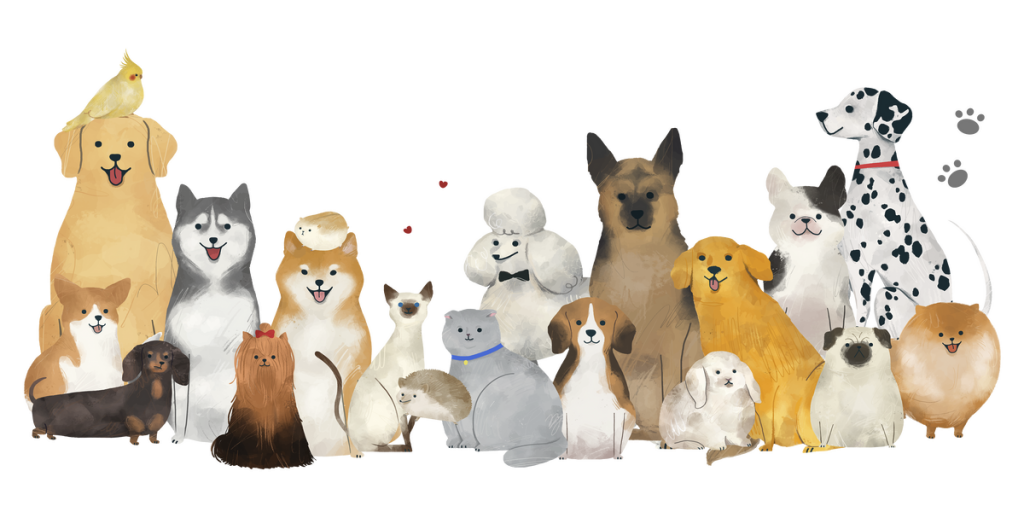General History Of Dogs
Dogs have been with us since the Paleolithic era and have played an essential role in human cultures and societies. Here’s a brief history of dogs from the Paleolithic era to modern times.
Dogs in the early days
The Paleolithic era was before written records when humans started to live in societies. Dogs probably lived with humans during this time and likely served as helpmates or protection animals. Some important events in the history of dogs during the Paleolithic era include the domestication of wolves by humans, which helped promote human civilization. Additionally, the early man began to train dogs to perform specific tasks, such as hunting or carting goods.
During the Neolithic era (about 10,000 to 5,500 BC), humans built permanent settlements and developed more complex social systems. As a result, dogs began to play an increasingly important role in human societies. For example, they used them as working animals, such as hunting dogs or herding dogs.
Dogs continued to be essential members of human societies throughout the Bronze and Iron Ages (which spanned from about 3200 BC to 410 AD). During this time, dogs performed tasks such as tracking down prey or guarding settlements.
Eventually, the Romans became the first central culture to adopt dogs into their society. By the Middle Ages (from about 500 AD to 1500 AD), dogs had become almost a universal part of many cultures worldwide. They were used for tasks such as hunting, guarding property, and helping people with disabilities.

Dog domestication
In every part of the world, except in the West Indies, Madagascar, Malaya, New Zealand, and Polynesia, there are signs that an indigenous dog family existed. Among the early Mongolians, dogs remained wild and neglected for centuries, prowling in packs, gaunt and wolf-like, as it prowls today through the streets and under the walls of every Eastern city. Dogs have been around for thousands of years, but these groups of people didn’t try to tame dogs or make them better. They didn’t try to make them their friends. They were neglected and socialized with humans in no way at all. They didn’t try to change them. It wasn’t until people started living in cities in the Middle East that they began to change dogs. They made dogs different and bred them to fit their purposes and lifestyle.
This is what has resulted and evolved into the diverse breed of dogs we have today. But this remains questionable. Many still argue that how can these enormous kinds of dogs have one ancestor, the wolf, especially when you compare some dog breeds such as a mastiff and a poodle. It almost seems outrageous. But it is true. Dogs came from wolves and wolves of different sizes and colors too. The difference between the biggest and the smallest dog is no more significant than between the biggest horse and the smallest pony. The dog family is as different from each other as the horse family and other animals. Professional dog breeders and researchers can adequately account for differences in type and size.
Middle Ages (500 AD to 1500 AD), dogs had become almost a universal part of many cultures worldwide. They were used for hunting, guarding property, and helping people with disabilities.
Dogs vs. Wolves
From structure down to behavioral traits, it’s evident that dogs and wolves are alike. For example, both dogs and wolves have thirteen pairs of ribs, five front, and four hind toes. Behaviorally, wolves howl, but they will also bark when they are with other dogs. They are carnivores, but sometimes they eat vegetables. When they are sick, they eat grass. When wolves are hunting, some will go after the animal, and others will try to block the animal’s escape. This act is like when dogs are hunting in a team. They do the same thing.
A further significant resemblance between the wolf and the dog is that the gestation period in both species is sixty-three days. Another similarity is that puppies and pups are blind for the same duration. The mother wolf or dog regurgitates meat for their infants to eat. The puppies stay with their mother for two months.
Counter arguments such as the inability of wolves to bark have been cited in many instances to debunk the theory that wolves and dogs are of the same species. Still, research proves that although wolves howl, they do bark, but rarely unlike dogs that do so often. Therefore, that argument is flawed.
Studies show that native dogs of specific locations have similar traits as the wolves of that exact location.
The saying that a dog is man’s best friend is a journey that started years ago between humans and dogs. Today, dogs continue to play an essential role in our society. They are used as working animals for search and rescue, law enforcement, therapy, and military purposes. They are also often used for recreational purposes, such as walking dogs or running dogs.


